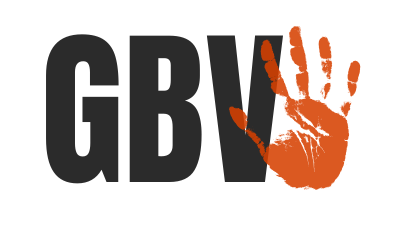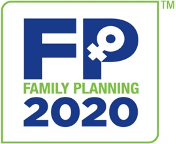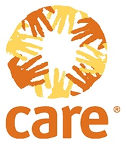WEBCAST | Gender-Based Violence in Conflict and Humanitarian Settings
Selected quotes from speakers:
Beth Schlachter
“At the heart of rights-based family planning is the ability of women and girls to decide freely and for themselves if and when they want to become pregnant and then to have the freedom to exercise that right by having access to information and a range of contraceptive options, but the rights of women and girls are fundamentally undermined when they’re subjected to gender-based violence, as is all too often the reality in the lives of women and girls, especially those who are displaced by a natural disaster, conflict, and other crises.”
“Globally, 35% of women have ever experienced physical and/or sexual violence by an intimate partner or sexual violence by a non-intimate partner. Some national studies show that the number can be as high as 70% of women and that rates of depression, having an abortion, and acquiring HIV are higher in women who have experienced this type of violence compared to women who have not. 137 are killed by a family member every day. That’s a staggering statistic, and it’s estimated that of the 87,000 women that were killed intentionally in 2017…more than half of these women, 50,000, were killed by an intimate partner or a family member. Violence against women is known to increase during times of crisis, as I mentioned, and has increased significantly during the COVID-19 pandemic. Calls to helplines have increased five-fold in some countries, as rates of reported intimate partner violence increase because of the pandemic. Restricted movement, social isolation, and economic insecurity are increasing women’s vulnerability to violence in the home around the world.”
Joan Timoney
“So the goal is that every humanitarian effort, from the very start…provides safe and comprehensive services for GBV survivors and includes measures to prevent and mitigate the risks of GBV, especially violence against women and girls. So, there’s three objectives related to that goal. The first one is to get those specialized services for GBV survivors in place right away. From the start. The second is to make sure that you’re integrating prevention and risk-mitigation in all sectors of humanitarian work. So, whether that you’re delivering food, or you’re helping with shelter, or providing water and sanitation, are you doing it in a way that prevents and mitigates the risks to beneficiaries of GBV. And the third one comes back to that gender equality point. The third objective is mainstreaming gender equality and the empowerment of women and girls throughout humanitarian action, so that you’re really getting at that root cause of GBV.”
“There are six areas of work in the roadmap, and I’ll just very quickly go through those. But if you think about what a really quality GBV response effort look like, first the actors have the institutional policies in place in their own organizations to do the work, and that’s true for the humanitarian system too. Second, that we have strong coordination. You’ve got to have good coordination on the ground, on GBV, in humanitarian response to have an effective response. The third one relates to data: the safe and ethical collection of data on gender-based violence and gender issues that is not only collected but perhaps equally importantly, I guess, is actually used to inform planning, programming, monitoring. The fourth one, of course, relates to funding. You have got to have that sufficient funding in place. The fifth one relates to the specialized services I mentioned for survivors, and the sixth relates to risk mitigation. So partners make measurable commitments under those areas of work, and they report annually on their progress, so we have that accountability built in. And we’ve seen progress in the first five years, but as I said there is so much more to be done and areas that needed added emphasis, for example, that engagement with local partners.”
“We still can get pushback around the notion of gender equality work being humanitarian work, and there’s still too many actors who may say, too many colleagues who may say, ‘You know what? That’s not humanitarian, that’s development, long-term development work, and I think that it’s getting better […] It’s always good to quote the under Secretary General for humanitarian affairs, because he says often that gender equality and the empowerment of women and girls are the core of principled and effective humanitarian response, and I think we’ve heard why, right, from colleagues here: the central role that women play as first responders, the centrality of their thinking, planning, and knowledge around what works, etc. And so, if you’re not really building those gender equality approaches into the work, then it’s going to be less effective, it’s going to have less impact, it might even be detrimental depending on how you’re doing it. So, if you’re thinking about what’s effective, what’s going to help the most people in the most effective way, then integrating gender equality into humanitarian action has to be standard operating procedure. And we have the tools, we have the policies. It’s really about that accountability for implementation, and I think that’s what all of us need to push: getting to that point where it is standard operating procedure, and it’s well-funded standard operating procedure I would say.”
Christina Haneef
“One of the core components of CARE's gender and emergency approach is to conduct rapid gender analyses, and we see gender analysis, as really, as paramount to understanding in real time the distinct needs, concerns, priorities and capacities of women, men, boys, and girls, and at-risk groups in communities affected by crisis. The approach understands the rapid and changing nature of humanitarian crises and the critical need to have information quickly to ensure that we can inform our programming, including for GBV prevention, mitigation and response, and all the while ensuring that we do no harm through the interventions.”
“CARE recognizes the critical gap and the social, structural, and economic barrier to women’s leadership and meaningful participation in humanitarian crises and the impacts that this has on both the design and implementation of response programming in that it often doesn’t reflect the voices and the priorities of women and girls and at-risk groups. And then, this has impacts on access to GBV services, information, and the mitigation of risk in humanitarian crises. And this is a gap recognized by many humanitarian actors, and as such, CARE is working to try and address this through our women needs and emergencies approach. So, the women needs and emergencies approach has the ultimate goal of addressing the principle of meaningful participation by supporting local women’s groups affected by crises, addressing the barriers that they face, and supporting the actions that they wish to take to make decisions that affect them and their communities, and this approach again incorporates a rapid gender analysis, but specifically focusing on power dynamics and community level decision making and leadership.”
“An initial rapid gender analysis in 2017 really highlighted the need for humanitarian programming to be gender sensitive and gender responsive, and it noted the high protection and GBV concerns in instances in Myanmar en route to Bangladesh… the high risk that continued in the camps in Bangladesh. During this rapid gender analysis, all respondents reported either knowing a survivor of violence or having been witness to an incident. So, this was and continues to be today disproportionally affecting women and girls. With the most recent rapid gender analysis in October 2020, so in the midst of the COVID-19 crisis, showing that GBV concerns still remain high and have been now exacerbated by COVID-19, leading to a further increase in GBV, and particularly intimate partner violence, polygamy, transphobic violence, and violence against female sex workers.”
Jennate Eoomkham
“[Local women’s rights activists and organizations] are also local leaders in their own communities that understand the context, the challenges, and the entry point for establishing critical GBV services, and most importantly by the virtue of their long-standing presence in the community they often have already established trust that is very important to support GBV survivors. And through their link with community members and networks they ensure that GBV survivors are supported and access to information about available services [is provided]. They have proven to be critical partners in GBV prevention and emergency response and the preparedness efforts.”
“I would just like to echo Joan on the need for support from the policy makers and donors. I think that, if I’m not mistaken, OCHA [United Nations Office for the Coordination of Humanitarian Affairs] has been sharing on their financial tracking services […] . [It] indicated [that] around 2018, 8.74% of global commitment funding was allocated to local and national actors. It may be increasing a little bit from 2017 […], but among all of these 8.74%, [only] a very small [amount] actually gets to women’s rights actors and women’s rights organizations. I think we all know that international communities, policy makers, and donors have the most influence […] [over] policy making, funding, platform, or fora. But I just want to ask all of us, for international communities, for donors, for policy makers to be conscious about those priorities. […], to center your policies and your funding to the needs and priorities of women rights organizations and women rights actors, and amplifying their voice, and not yours.”
Sarah Ashraf
“I think trust… building trust is really, really, important. And then when that trust is built, we have seen in the field, if that trust is built, because we had midwives who were providing family planning services and were well known by the women in the community and could counsel well so the trust had been built, or whether that trust was built because of other services that women came for – immunization for their children, or nutrition services for their children. Wherever there is that trust, women and girls will come for GBV services as well, and when they come, I think the question is: what does the frontline health worker have in hand to provide them? And that is a very big gap and challenge in the field. Frontline workers are not well equipped. They don’t necessarily have the right training, the right skills. They don’t have the supplies on hand to manage and treat, and above all, maybe they also don’t have the confidence to manage such cases because of everything else that is attached to them. The legal aspect, the police side, the criminal side, the fact that the Ministry of Health has not given them a backing of strategy or protocols that they can clearly work with, or they don’t have the referral systems outlined for them. So, I think it is very, very, important for us in the field to empower frontline workers. It is very important for us to us to work with the Ministries of Health on this aspect, […] with the costed implementation plan, and it is also very, very, important to also work with communities. We have known that communities have very limited information of what their aspects are once a survivor has gone through what she or he has, what is available for them in terms of services.”
“It is a mindset change so really looking at what’s happening on the ground. I think we, we tend to focus on…our guidelines, on what we know, but I think it’s very important to really study our contexts and understand what’s happening and who’s part of everything, and where are, how are all the issues interplaying. Leading to GBV, and then leading after GBV, what is actually affecting service provision. I think that’s very important because it’s unique to each context.”
Introduction

Moderator
Panelists
Hosted By

Maternal Health Initiative
Housed within the Wilson Center's Environmental Change and Security Program, the Maternal Health Initiative (MHI) leads the Wilson Center’s work on maternal health, global health equity, and gender equality. Read more


Environmental Change and Security Program
The Environmental Change and Security Program (ECSP) explores the connections between environmental change, health, and population dynamics and their links to conflict, human insecurity, and foreign policy. Read more


Middle East Program
The Wilson Center’s Middle East Program serves as a crucial resource for the policymaking community and beyond, providing analyses and research that helps inform US foreign policymaking, stimulates public debate, and expands knowledge about issues in the wider Middle East and North Africa (MENA) region. Read more


Brazil Institute
The Brazil Institute—the only country-specific policy institution focused on Brazil in Washington—aims to deepen understanding of Brazil’s complex landscape and strengthen relations between Brazilian and US institutions across all sectors. Read more


Latin America Program
The Wilson Center’s prestigious Latin America Program provides non-partisan expertise to a broad community of decision makers in the United States and Latin America on critical policy issues facing the Hemisphere. The Program provides insightful and actionable research for policymakers, private sector leaders, journalists, and public intellectuals in the United States and Latin America. To bridge the gap between scholarship and policy action, it fosters new inquiry, sponsors high-level public and private meetings among multiple stakeholders, and explores policy options to improve outcomes for citizens throughout the Americas. Drawing on the Wilson Center’s strength as the nation’s key non-partisan policy forum, the Program serves as a trusted source of analysis and a vital point of contact between the worlds of scholarship and action. Read more


Mexico Institute
The Mexico Institute seeks to improve understanding, communication, and cooperation between Mexico and the United States by promoting original research, encouraging public discussion, and proposing policy options for enhancing the bilateral relationship. A binational Advisory Board, chaired by Luis Téllez and Earl Anthony Wayne, oversees the work of the Mexico Institute. Read more







